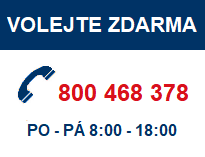Detail analýzy
| 18.10.2022 / Erste Group Research |
Hungary Special | Hungary’s way from main policy rate to one-day deposit rate To curb the speedy depreciation of the Hungarian forint, on October 14, the central bank announced extraordinary measures and introduced a one-day deposit rate offering 18% interest payment, with quick deposit tenders held daily since the announcement. This will effectively replace the base interest rate that had been raised to 13% at the September meeting. At the same time, the central bank withdrew from holding tenders for the one-week deposit, variable rate deposits, and discount bill auctions until a different decision is made. Further, the Hungarian central bank committed to directly providing foreign currency liquidity needs arising from covering energy imports in the coming months. The central bank will apply these emergency measures as long as they see stabilization of the financial market situation. The Hungarian policy rate has been losing its relevance over the years, however. To get to the origins, we need to move back in time to 2016 or even 2014, when the central bank introduced the Self-Financing Program. First, the relevant interest rate for monetary policy became the overnight deposit rate, not the main policy rate. In March 2020, the weakening of the Hungarian forint due to the Covid crisis led to the opening of the one-week deposit facility. The Hungarian forint has been continuously depreciating over last decade. Prior to 2020, the weakening of the forint vs. the euro had been rather gradual. First the outbreak of the pandemic and in two year the war in Ukraine pushed the EURHUF levels uo in a relatively short period of time. AT the top of global factors, locally inflation has been surging, Hungary has faced the threat of losing EU funds while current and capital accounts' deficit have widened. The final trigger for a rapid EURHUF increase to the historically high level above 430 was the announcement of the end of interest rate hikes after the September meeting, which markets have not fully believed in. In October, the MNB managed to regain control via its extraordinary steps. The possibility of increasing short-term rates even to 25% could significantly mitigate the depreciation pressure and the EURHUF should be able to stabilize in the range of 405-415 in the short run. On the other hand, in the current geopolitical environment, the exchange rate remains exposed to quick changes of global risk assessment and, due primarily to the still increasing current account deficit, the vulnerability of the forint has so far hardly been mitigated. Thus, reaching an agreement with the EU has remained a key element that would increase investor confidence in Hungarian assets, including the forint. |
|
|
Základní informace
| Autor | Erste Group Research |
| Datum | 18.10.2022 |
| Jazyk |  |
| Název produktu | CEE Economies Special Report |
| Hlavní téma | Makro/Úrokové sazby, Směnné kurzy/FX |
| Zaostřeno na ekonomiku | CEE, Maďarsko |
| Zaměřeno na měnu | Maďarský forint |
| Zaměřeno na sektor | - |
| Stáhnout |

